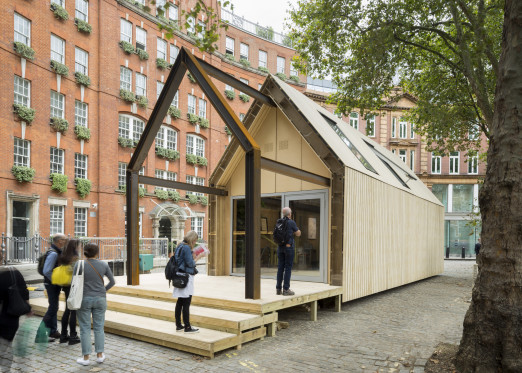Arup and 12 other partners produced a high-performance organic façade that reduces the embodied energy of buildings (the sum of energy required to produce an object). The fibres used for the façade panels are made from a mix of inexpensive natural sources, such as flax, hemp and jute plants. The resins that hold the fibres together are derived from residual waste from sugarcane and soy harvesting. The façade materials can be reused and remanufactured.
Regenerate / Loop / Share / Optimise
Could you tell us a little bit about your professional background(s) and how you got interested in issues around the circular economy?
As a designer and materials scientist in my professional career I have been striving to consider the impact of my decisions from a technical, financial and social point of view. I think the principles of Circular Economy go in the direction of giving an holistic response to a number of issues that permeate the construction industry. Hopefully by applying some of these principles in my daily work I can give my little contribution in creating a better future for our industry.
How prominent is the circular economy in conversations among the engineering profession and engineering education?
I think that the discussion is still at its embryonic stage, even though more recently I experienced an increased interest among the different stakeholders involved in the construction industry. If initially it was a topic debated mainly amongst economist, designers and academia, I believe now contractors, manufacturers as well as large companies and institutions see a potential benefit.
What was the Biobuild project and what was Arup’s role?
The BioBuild project has been a unique opportunity to advance the research on alternative materials for construction. It has been setting the basis for potential use of natural-fast growing plants to make advanced building components. This opens the door for using plants both growing in our cities and from the countryside to become a resource of raw construction material that constantly regenerates. As Arup we have been leading the engineering process of 4 building construction systems through a technical development lasting 3,5 years. We are currently investing more of our resources to progress such a research.
How would you describe the different mindsets of circular thinking/design for the CE versus traditional linear thinking for the linear economy?
Circular thinking implies a long-term strategic plan, a strong vision for a healthier future. Linear exploitation models are - in most of the cases - short-term plans with little consideration of the impacts on the future.
How did you use the ReSolve framework in planning the creation, disassembly and potential remanufacture of the façade? What were the key challenges? How soon could it be developed for widespread industry use?
Please see attached document. Notice it is a document not for external use, so it shall be used only to get the relevant information.
Next steps?
Working more on alternative materials for construction. Sources such as plants that grow in our gardens, balconies and parks can become construction materials. This was unconceivable a few years back but it is realistic nowadays with the advancement of production techniques and improved materials engineering. This is a unique opportunity to transform construction materials from a finite resource into a potentially infinite resource. Today we can imagine having renewable materials as it is happening for renewable energy sources.
BioBuild samples
Arup, GXN Innovations, partners
Biocomposite materials
Germany, 2015


